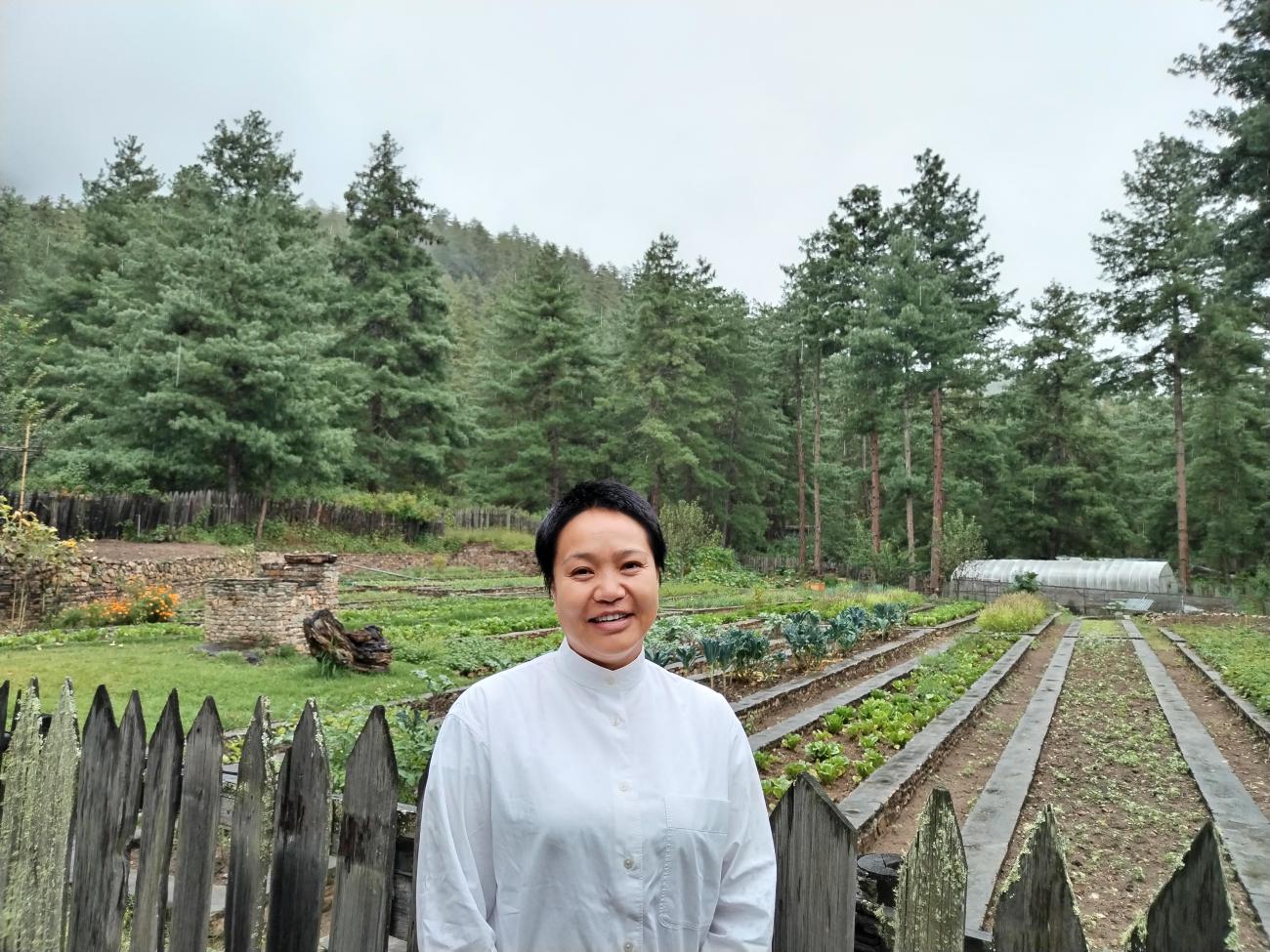The People of Bhutan
Truly immersive travel is at the heart of every Wild Frontiers holiday. We strongly believe that travel can be a powerful force for good; breaking down barriers, dispelling myths and bringing people from different cultures and communities together. Interacting with locals is something I eagerly look forward to when visiting a new country, region or place. On my recent journey through Bhutan, I had the pleasure of conversing with many interesting people from all walks of life, and it was heartening to hear individual stories and experiences all rooted in a deep love for their country.

T.Sangay Wangchuk (or ‘Sangay Sir’ as he is affectionately called) is a master storyteller. His encyclopaedic knowledge of all things Bhutan extends into Buddhist history, art history, mythology, tradition as well as agriculture. I listened to many of Sangay’s stories during my stay at his charming farmhouse in a fruit orchard which is now run as a hotel, and left enamoured by tales and myths of serpent deities and forest spirits that rule the hillsides around Punakha.
The Thimphu Tsechu (festival) grounds were heaving with people, inquisitive visitors like myself and throngs of locals on annual pilgrimages to witness prayers, song and dance whilst socialising with friends and family. After an hour of being bewitched by colour and movement, I strolled around the grounds. I came across these sweet girls hiding from the sun, sitting under some decorative curtains away from the performers.
“Don’t you want to see the dancing?” I asked, and they cheekily responded, “we have taken a few videos and now want to upload them on Tik Tok!” They happily posed for me and other photographers giggling in glee.
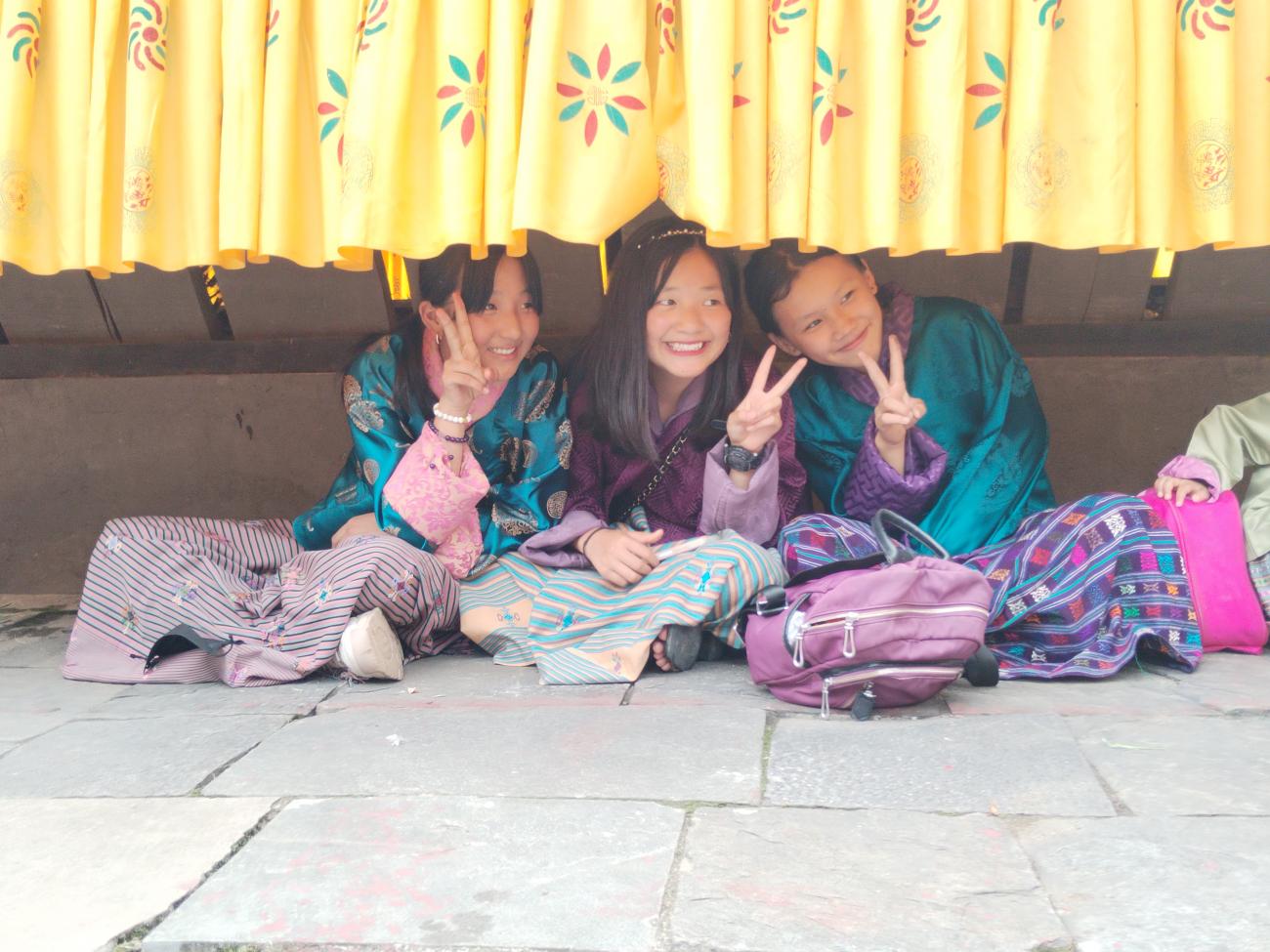
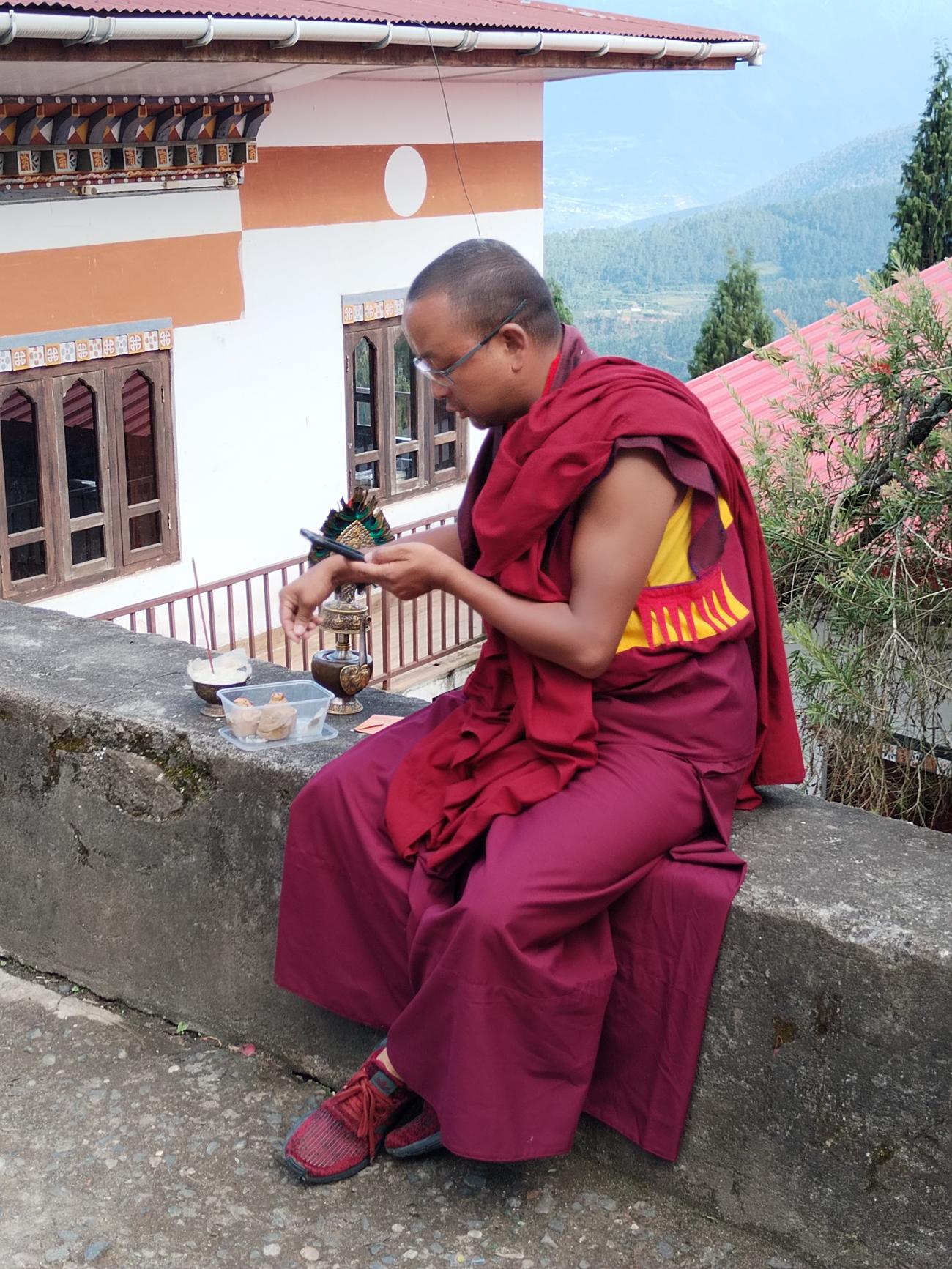
The Nalanda Monastery set high above the Punakha valley is a renowned place of learning. Young monks spend years mastering the texts and Buddhist religious practises. It was in shutdown mode when we visited as everyone was on a week-long break. Fortunately, we found one early returner to bless the 'tsa tsa' small sculptural votive offerings we'd made the previous day. I was thoroughly bemused when he pulled out his mobile phone and read out the mantras from it to complete this ritual.
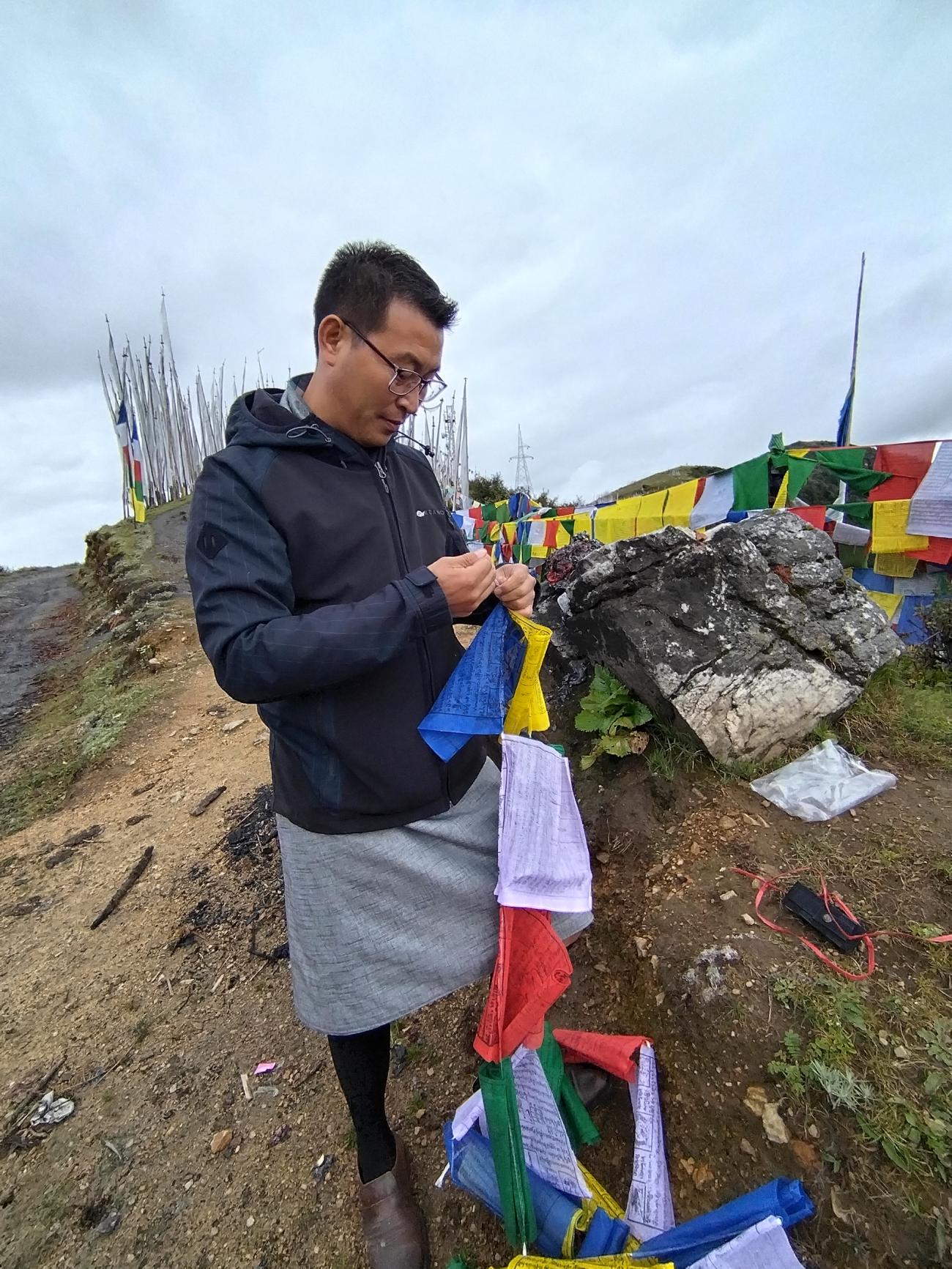
I spent the first week of my time in Bhutan with expert guide Leki Phuntshok. An experienced hand at guiding visitors through his beloved country, his gentle and sweet demeanour ensured a thoughtful and considered introduction to all aspects of Bhutanese life and culture. At the misty Chelela pass, early one morning I learned about Lung Dhar. What I’d thought was a colourful embellishment of hillsides and passes was actually a sacred ceremony deeply rooted in tradition. Representing the five elements and five senses, the colourful set of flags are blessed in a sacred ceremony by monks. Prayers and wishes are written on these flags and then hoisted high above the ground. As the wind is considered an expression of the mind and mental energy, when flags flutter, it is believed that blessings are activated and carried through the valleys.
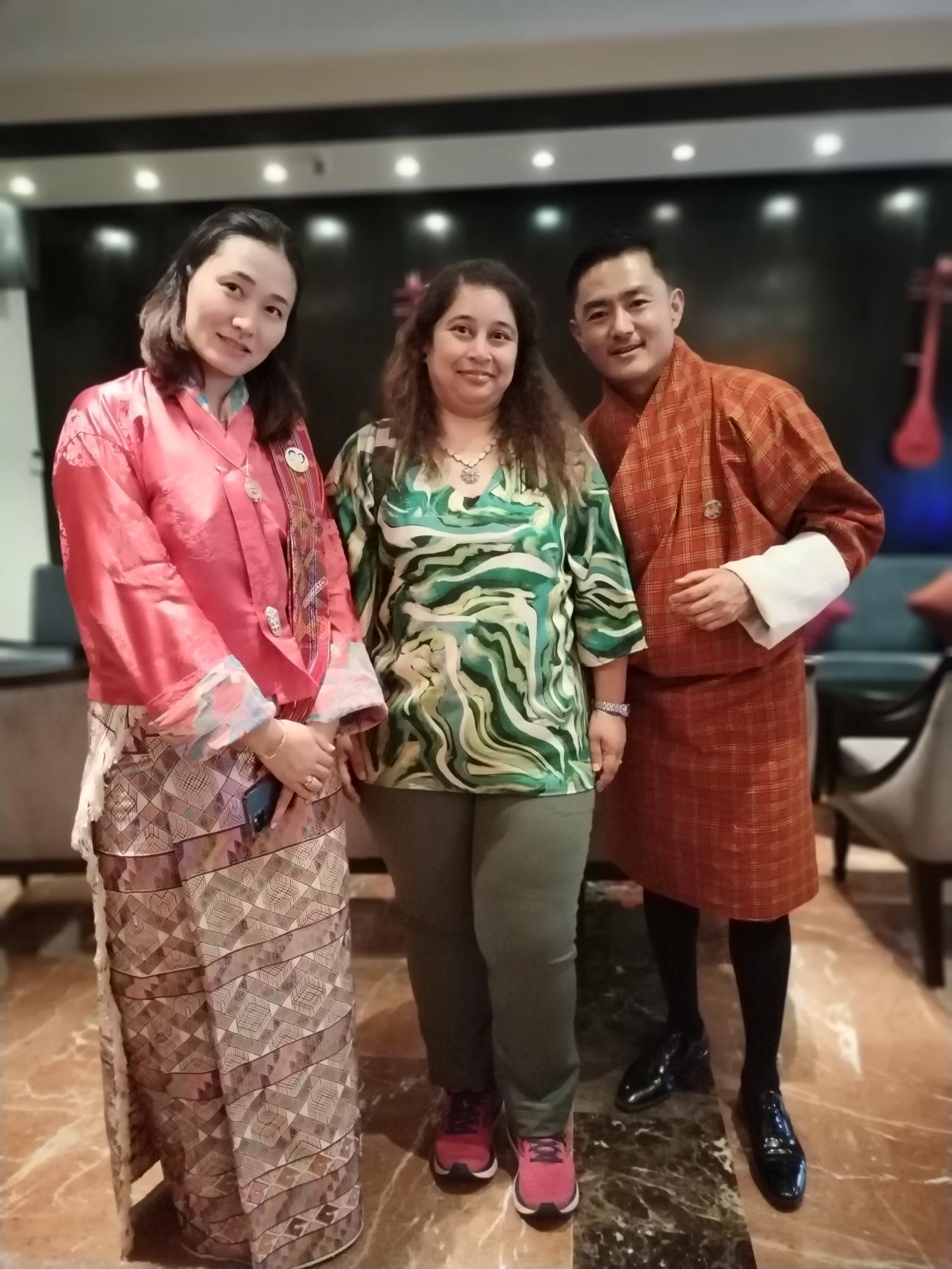
At the end of my first full day in Paro I decided to have a quick dip in the pool before dinner. A friendly Dee Dee struck up a conversation with me and we ended up chatting nonstop for half an hour about all sorts of things. Only at the end of the conversation did we introduce ourselves. She said she was an actress and told me about her work. I had to apologize as a) I couldn’t really see her because I was without my glasses in the pool and b) I hadn’t seen a single Bhutanese film. The next day I was lucky enough to meet Tshering as well, her husband, a film director and together they are working hard to bring together the film fraternity to host a Film Festival in Bhutan next year.
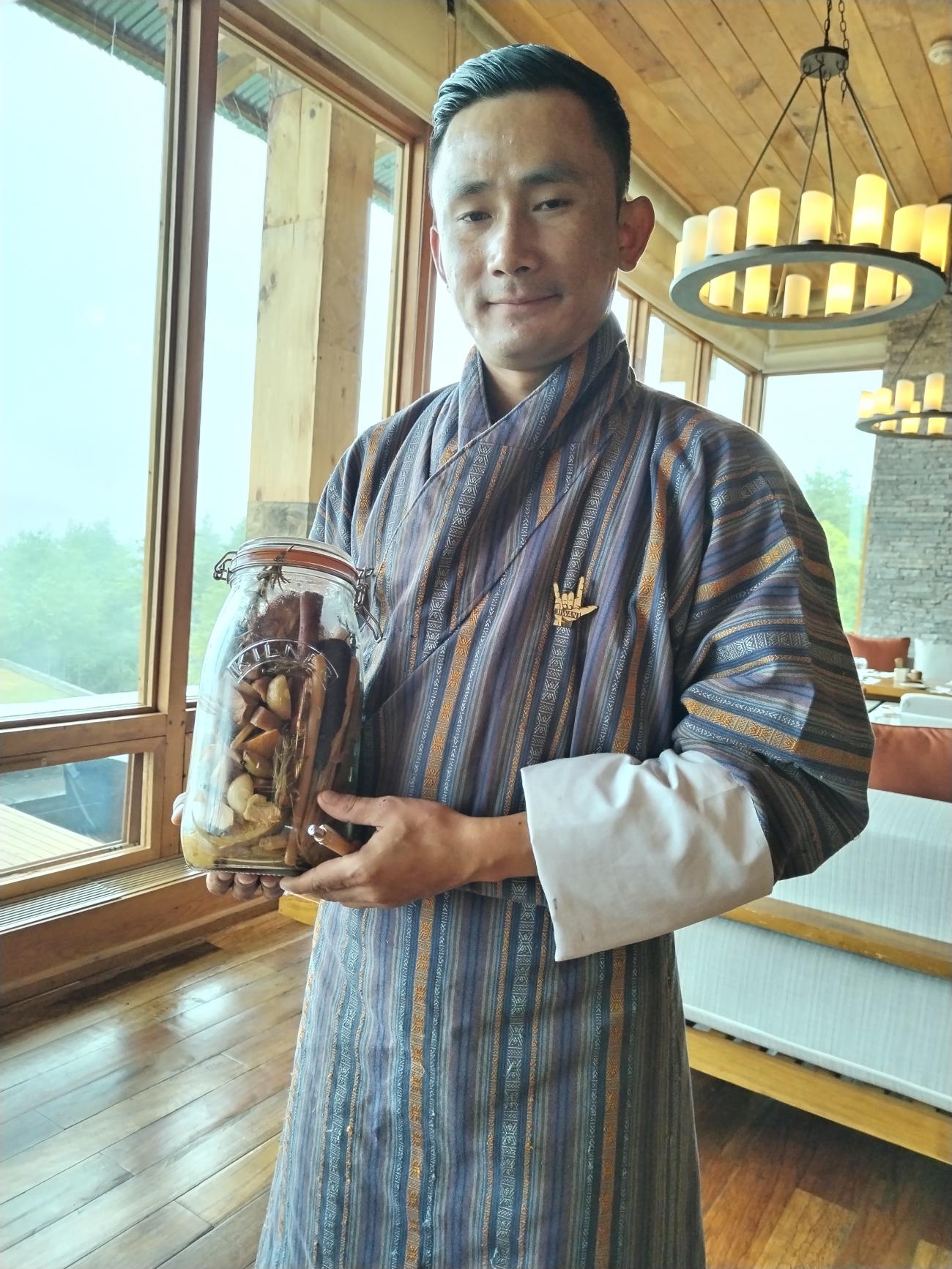
Breakfast at the Six Senses hotel in Bhutan is a real treat. There’s a lot to choose from a selection of Western, Indian and Bhutanese hot dishes, fresh bread, avo-on-toast, cereals etc. but what set it apart for me was their booster shots. Two delicious concoctions served every morning, that were a mix of fruit, vegetables, roots, herbs and spices. I tried them all! My favourite though was the fiery one, laced with chilli and horseradish, fruit peel, garlic, cinnamon and rosemary. As I’d asked 101 questions the previous day, Jiwan, pulled out a jar of the mother-brew to show me and had the chef write down the recipe – a special memento I’ve brought back with me to try and replicate at home.
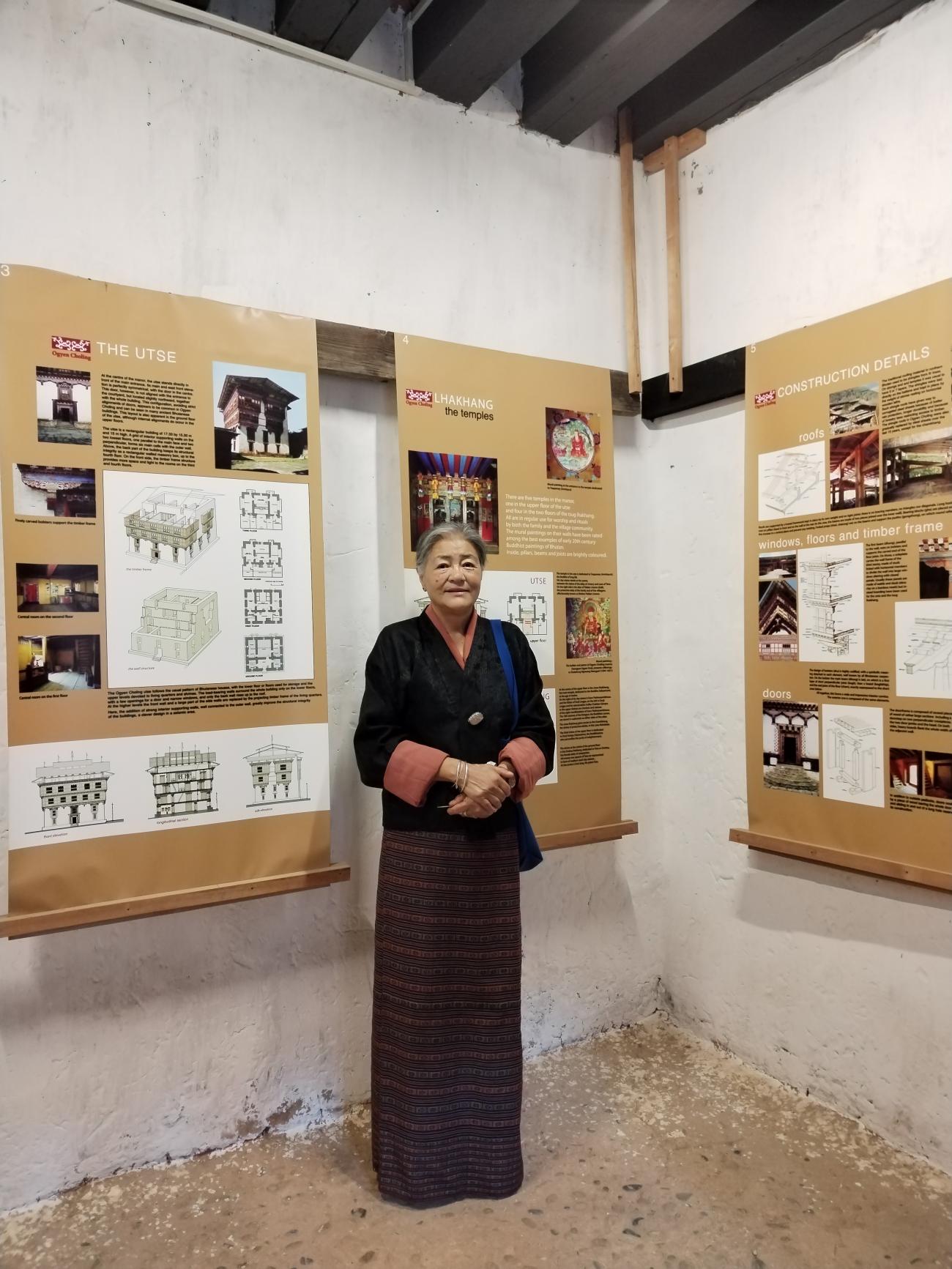
Despite a full house and a busy schedule, the charming Kunzang Choden took out fifteen minutes to have a chat with me, in her beautiful home turned heritage centre and hotel in the Tang Valley. Sipping freshly picked mint tea, we sat in the outdoor restaurant, on a sunny morning under garlands of drying chillies overlooking a vegetable patch and traditional buildings part of the Ogyen Choling Manor. Kunzang’s life here as a child inspired her to write and she has now authored several books on the social fabric of the country, short stories for children as well as a cookbook. Fascinating insights into her traditional home-turned-museum (“This whole room used to be a grain store,” she said) and the valley at large was very rewarding.
The charming and soft spoken Karma (far right) was my driver in Bhutan for 2 ½ weeks. As a young man Karma worked in New York City armed with only a few words of English, he learnt the language doing odd jobs and driving. When he returned to Bhutan he invested in a car and became a freelance driver for tour operators and has been doing so for the last fifteen years. His skills on the roads and some ‘aspiring-to-be-roads’ gave me great confidence even when it rained nonstop and visibility was poor. Enthusiastic morning greetings never gave away our long days of hotel inspections and visits. We ate lunch together at village inn’s and café’s and shared our love for rice and spicy food. He’d stop at wayside shops to show me different varieties of chillies, always ensured water bottles were filled and the car was clean and full of snacks on long drives and his eclectic selection of music made me laugh out loud. Romantic melodies were followed by country songs, Bollywood classics and a sudden, Who let the dogs out!?
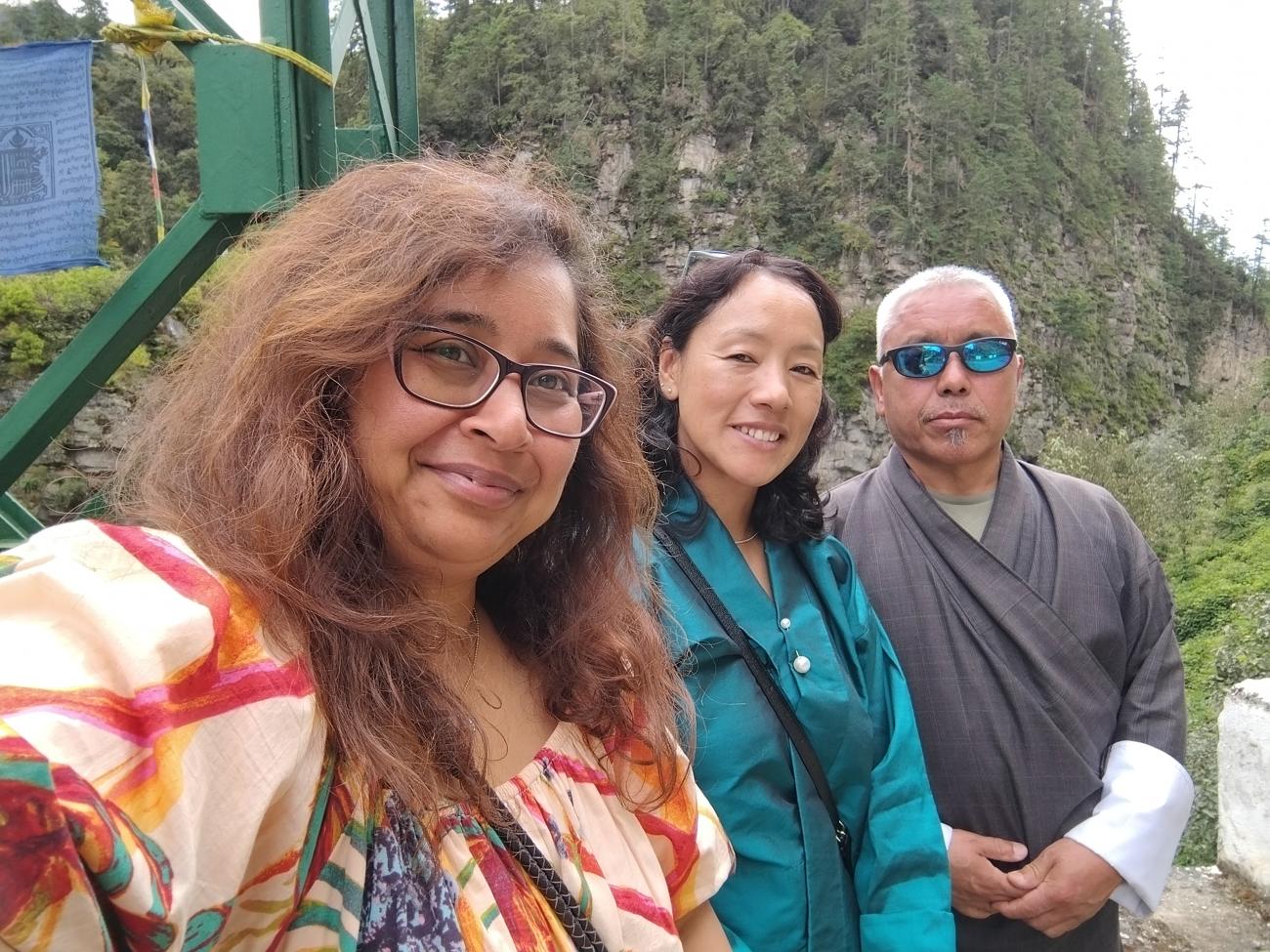
Tshering Laden, the head chef at Uma Paro walked me to her organic garden on the ground of the property on a misty-rainy morning. She explained how she’d grown up in Bumthang, a fertile region in the east of the country; her father is a farmer and always her go-to for tips and suggestions not only on what to grow when but also how to treat and look after delicate herbs and salads. The best breakfast smoothie I’ve had ever, with beetroot-apples-carrots and ginger validated her fresher than fresh farm-to-table approach. We discussed traditional ingredients, the use of butter, cheese and chilli in Bhutanese cooking and the influence of neighbouring countries on the changing patterns of food. A big part of her job is preserving produce for the winter months when the weather doesn’t support the growing of fresh ingredients. She sent me off with a care package for my trip including a packet of dried ginger candy. “You are going to need this,” she said and she was right! Both delicious and necessary on all the windy roads and passes I encountered on my trip.
